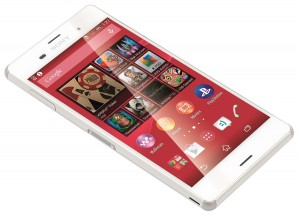Sony produces flagship smartphones at such a blistering pace that there are rarely any significant improvements made between models. However, while its new Xperia Z3 arrives only 6 months after the Z2, the upgrades this time around are easily apparent. Sony has amended many of its last flagship’s flaws, leading to a phone that deserves to be recognized right alongside top Android efforts from HTC, LG, or Samsung.
The Xperia Z3 maintains the line’s most recognizable feature with its IP68-certified, dustproof and water-resistant build. Its exceptional glass-heavy design is back, as are a strong camera and truly long-lasting battery. While some familiar issues remain, they feel less pronounced than before. Let’s take a deeper look.
Build and Design
At first glance, the Xperia Z3 is almost identical to the series’ previous models, but a serious turnaround in the design structure is evident once you pick it up. More specifically, the phone’s formerly sharp edges have been rounded, and are now made of metal, not plastic. (Intentional or not, it’s very much like the newest iPhones in that way.)
These contribute to the phone’s slim dimensions, making it feel better in the hand than Xperia Z, Z1, or Z2 did. Now with a glass coating on its back as well as its front, the Z3 immediately creates premium feeling when held in the hand. The smooth transition from this glass to the metal border that surrounds it is particularly impressive, as it almost seems nonexistent. Compared to the Xperia Z2, the left and right bezels have also been slimmed down.
Still, using such a great amount of glass adds some heft, with the Xperia Z3 weighing in at 152 grams (0.33 lbs.). Similarly, its dimensions, 146 x 72 x 7.3 mm (5.75 x 2.83 x 0.29 in), make it a little bit taller than the average 5.2-inch smartphone. That said, the improved ergonomics relative to the Z2 make the large, slightly heavy body feel almost irrelevant in practice.
The usual set of sensors is located on the front, above the display, along with the Sony logo, an LED notification light, and a 2.2-megapixel front camera. Two stereo speakers are placed above and under the screen. The smooth back includes the expected logos, and 20.7-megapixel camera lens with LED flash.
The phone’s right side includes covered microSIM and microSD card slots, as well as the power key, volume rocker, and a dedicated camera activation button, which doubles as a shooting button. That key is quite tiny and shallow, but it fires up the camera app almost instantly, and its integration does allow you a capture photos underwater, if that’s something you’re into
The left side holds the microUSB hub, also protected with a cover, the docking connector, and a lanyard connector, even though it’s impossible to imagine someone would want to hang such a massive phone on their person.
The upper side includes a 3.5 mm audio jack. Despite being coverless, it’s also waterproof. It holds a secondary microphone intended for ambient noise reduction during phone calls or recording videos. The lower side is totally barren.
Display
The Xperia Z3′s bright and vivid display is its most significant improvement over the Z2. The 5.2-inch, 1080p IPS LCD panel uses what Sony calls Live Color LED technology, which is said to combine red and green phosphorous with blue LEDs to achieve greater brightness without increasing power consumption. Given the device’s top-notch battery life, this seems to work as advertised. The brightness is the big selling point here, but the display’s excellent contrast ratios also stand as a marked upgrade from Xperias past.
Still, viewing angles leave a bit to be desired, as colors noticeably fade when viewed from the side. Luckily, none of that cripples the panel in direct sunlight — colors are weaker in that instance, but the whole thing is still more than visible outdoors.
As far as sharpness goes, this display is just as crisp as any other 1080p flagships on the market. With a pixel density of about 424 ppi, it’s impossible to single out individual pixels with the naked eye. The QHD resolution of other big-screen devices like the LG G3 wouldn’t have made much of a difference to the ordinary viewer here, and it likely would’ve drained the battery faster to boot.
The post Sony Xperia Z3 Review: Long Lasting Quality appeared first on Brighthand.com.


